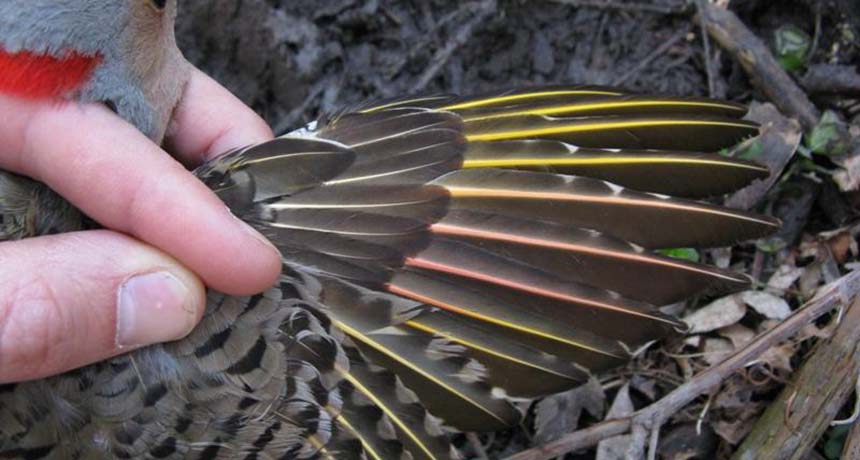Berries may give yellow woodpeckers a red dye job

Aberrant red feathers stick out amid the typically gold wings of yellow-shafted flickers (Colaptes auratus auratus).
C. Hansen

Aberrant red feathers stick out amid the typically gold wings of yellow-shafted flickers (Colaptes auratus auratus).
C. Hansen